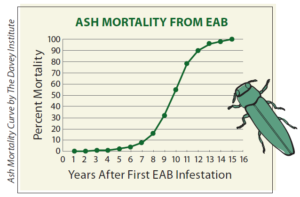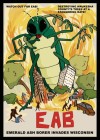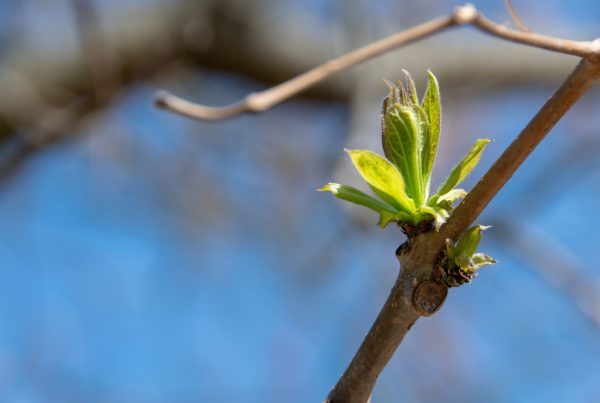Emerald Ash Borer (EAB) is the most destructive forest insect to ever invade the United States. First identified near Detroit in 2002, this Asian beetle is on an unstoppable march.
It is now here in southeast Wisconsin, hitting hard in areas across Waukesha and Milwaukee counties.
To date, EAB has killed hundreds of millions of ash trees. It will not stop spreading until it infests and kills every single ash in our forests, swamps and urban areas – including the ones in our own backyards.
By the time it completes its cross-country trek, EAB will be responsible for an estimated $280 billion in devastation. However, even the astronomical economic destruction only tells part of the story.
The truth is the ecological consequences following the expected loss of nearly 8 billion ash trees has yet to be fully understood, especially in cities and towns where ash trees are a major part of our urban landscape. There are 28,000 ash trees alone on property owned by the City of Milwaukee that are being treated, with thousands more on private properties.
Considering where we currently are on the ash mortality curve, ash trees in our area need to be on a treatment plan now if they are to be preserved.
 Many of the trees in southeast Wisconsin are currently at the six to seven year stage along the ash mortality curve, (see graph). In communities like Franklin and Oak Creek, ash trees are closer to the nine or ten year stage, which shows it’s only a matter of time before untreated ash trees start dying off, and quickly.
Many of the trees in southeast Wisconsin are currently at the six to seven year stage along the ash mortality curve, (see graph). In communities like Franklin and Oak Creek, ash trees are closer to the nine or ten year stage, which shows it’s only a matter of time before untreated ash trees start dying off, and quickly.
What we know for sure is that once an ash tree dies, it decays quickly, posing a hazard to both people and property. However, ash trees that are professionally treated can survive EAB.
Unfortunately in the battle against EAB, time is no longer on our side. NOW is the time to decide the next steps for your ash trees.
Contact us immediately if you need help identifying ash trees on your property and to discuss plans for preventative treatments or strategic removal and replacement.




